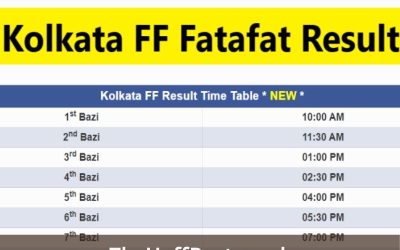Which of the Following is Not the Internal Sort?

An introductory paragraph is very important and should clearly state your position on the topic. It should also include a thesis statement, which will be used to drive your argument throughout the paper.
The introductory paragraph is the most critical part of your essay. Be as precise and direct as possible in your thesis statement. In this article, we will discuss the most important question Which of the Following is Not the Internal Sort?
Insertion sort
Insertion sort is a comparison-based sorting algorithm that sorts the elements of an array one at a time. It performs this sorting by iterating through the input elements, expanding the sorted array by comparing each element to the sorted array’s greatest value, and shifting any element that is greater than the current element one place forward.
This sorting technique is similar to how we arrange cards in a deck of cards when we play bridge or sort cards in our own hand. For each card in the deck, we compare it to a card in the sorted deck to determine whether it should be moved to the right or the left. If the card is smaller than the corresponding card in the sorted deck, it remains in place; if not, we shift the new card to the right and continue to compare each card until all the cards are sorted.
The insertion sort algorithm iterates through the input array and stores the value of each element in a key (see Figure 9.1). Next, each element is compared to its corresponding element in the sorted array to see whether it should be moved to the right or to the left. If it is smaller than the corresponding element in the sorted array, it is moved to the right and continues to be compared; if not, it is moved to the left and continued to be compared.
When comparing the results of the insertion sort algorithm to other sorting algorithms, it is important to remember that this algorithm works best with small amounts of data. It takes a long time to run on large sets of data, but it is fairly fast when adding new items to an already-sorted set.
It is also important to remember that insertion sort’s worst case running time is O(n2). This is because every iteration of the inner loop scans through all of the sorted parts of the array and then shifts the entire sorted subsection before inserting the next element.
Insertion sort is the only comparison-based sorting algorithm that has this best-case behavior. However, this is only true when the array is already sorted. If the array is not sorted, insertion sort performs many comparisons and requires many swaps to bring the elements into order. This contributes to the running time of this algorithm and makes it unsuitable for most applications.
Selection sort
Selection sort is a simple, in-place comparison sorting algorithm that sorts an array by repeatedly finding the minimum element (considering ascending order) from the unsorted part and swapping it with the smallest element in the sorted sublist. This process is done over a set of elements and continues until the entire array is sorted, with no recurrences.
It has a time complexity of O(n) in the worst case and O(n2) in the average case, where n is the number of items. It is most suitable for small data sets and memory-constrained systems.
For example, a user might have a hand of cards and wish to arrange them in ascending order. In this case, the smallest card would be selected and placed at the beginning of the hand.
Then, each subsequent card would be chosen from the remaining cards and placed to its left. In this way, the smallest cards are sorted in ascending order from the left to right.
This sorting process is made up of two nested loops, and the overall algorithm has a time complexity of O(n2) in the worst case. It is not as efficient as other sorts in terms of the number of comparisons, but it can be useful in situations where writes are significantly more expensive than reads, such as with EEPROM or Flash memory.
In addition, the algorithm never makes more than O(n) swaps, which can be useful when memory write is a costly operation. This is because the array doesn’t need to move itself when it swaps values, only the pointers to the values.
However, this also means that the algorithm needs to make n steps before it stops, which is O(n) in the worst case and n + (n – 1) + (n – 2) +…+ 1 in the average case. This is because a step requires comparing the current min to each element in the unsorted portion of the array.
Merge sort
Merge sort is an algorithm that uses a divide-and-conquer technique to separate a list into sublists of equal size and then merges those sorted sublists into a final sorted list. It takes log(n) recursive levels to complete this process, and the average and worst-case time complexity is O(n log n).
This technique is useful in cases where the data size cannot fit into the RAM memory all at once. In these cases, it is necessary to load the data into RAM in small chunks and then store the rest of the data in an external memory.
The algorithm also has a high parallelization capability, making it a good choice for large-scale sorting tasks. It is also a space-efficient sorting algorithm, as it requires relatively little additional memory for the temporary array.
Although it is one of the fastest algorithms, it has some drawbacks. It is slower than other sorts for small lists and it doesn’t perform well on slow-to-access sequential media such as linked lists.
Another disadvantage of the algorithm is its O(n) space requirement for the temporary array. This extra memory is required for the recursive calls that it makes to split and sort the list into smaller sub-lists.
In addition, it requires more code to implement than other sorts, since the recursive calls need to be made repeatedly. Despite these shortcomings, merge sort is a useful sorting algorithm for large-scale systems that have limited resources and need to sort large amounts of data in a short amount of time.
While quicksort is a good alternative for external sorts, it doesn’t partition a list into sublists of equal sizes. It can also sort an odd-sized list without requiring any partitioning.
The merge sort divide-and-conquer algorithm is similar to the quicksort algorithm, except that it partitions a list into two sublists of equal sizes and optimally merges the sorted sublists. The divide-and-conquer approach also involves a recursive loop to conduct the recursive sorting of the list’s elements. The recursive loop compares the first element of both the sublists to determine which sublist is more likely to be sorted. The recursive sorting process is repeated until all the recursive calls have been made, and a sorted list of the original list has been obtained.
Bubble sort
Bubble sort is a simple sorting algorithm that involves comparing two adjacent list entries and swapping their positions if they aren’t in the correct order. It’s a popular algorithm used by computer science students to learn the concept of sorting algorithms. It can be helpful for arranging small data sets and for sorting data that’s almost in the right order already.
Bubble sorts are usually quite slow, but there are some improvements to the algorithm that make them faster. For example, cocktail sort is a bi-directional bubble sort that reverses itself from the beginning to the end of the list. It also eliminates turtles, which slow down the algorithm by preventing it from swapping elements close together.
Another improvement to the algorithm is smart bubble sort. This algorithm is able to detect useful patterns in average-case data and convert them to the best-case scenario, thus increasing its efficiency.
In addition, it can stop early when it recognizes that the list is sorted, which can improve its overall performance by reducing the number of passes required to sort the list. This algorithm also performs fewer comparisons in the average-case scenario than standard bubble sort, so it’s especially effective for sorting data on small memory devices.
However, the complexity of bubble sort is O(n2), which means that it takes a long time to process large lists. This can make it unsuitable for many applications, although it is relatively easy to optimize the algorithm for efficiency.
When learning a new sorting algorithm, it’s important to practice with a small data set first to ensure that you understand how the algorithm works. Visualizing the process can be helpful, as can practicing with physical representations like dice or dice cards.
While bubble sort is one of the simplest sorting algorithms, it’s not as efficient as other sorting methods on larger data sets. Therefore, it’s important to use efficient sorting algorithms when working with large data sets.
While you’re a beginner, it’s a good idea to learn several different types of sorting algorithms and to experiment with their implementation. This will help you expand your skills and build a strong foundation for developing more advanced sorts in the future.










